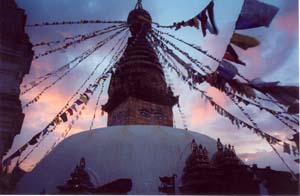
The Himalaya:
A Cultural, Religious, and Geographic History
An elective course for high school juniors and seniors
Drew Devore
Episcopal School of Acadiana
Cade, Louisiana
|
Course Description The course will survey the cultures and history of the Himalayan region, focusing specifically on the regions that make up present day Nepal and Tibet. Students will begin by investigating the geography of the region, and then moving on to study the various religious traditions, culture and history of the region. It will culminate with a discussion of the issues facing the region today, and a look towards what the future holds for the region. The course will also spend time investigting the issues that cross-cultural study sometimes generate (known as Orientalism) and how to avoid these problems. The course is designed as a one semester elective for juniors and seniors. Because it is an elective class for interested student, the reading load will be fairly light for this class, but make use of sophisticated (often college level) materials. The course is also designed to be taught to a small number of students (probably no more then ten in the class)
Course Overview/Outline Part I: Physical Geography
Part I: Orientalism
Unit III: Religions of the Region Part I: Hinduism
Part I: Ancient Tibet
Unit V: Contemporary Issues facing the Region Part I. Tibetan Issue
|
This site was created by Andrew Devore at the NEH Summer Institute "Cultures and Religions of the Himalayan Region," held at the College of the Holy Cross, Summer 2006







